The science of MyLee breastfeeding sensor
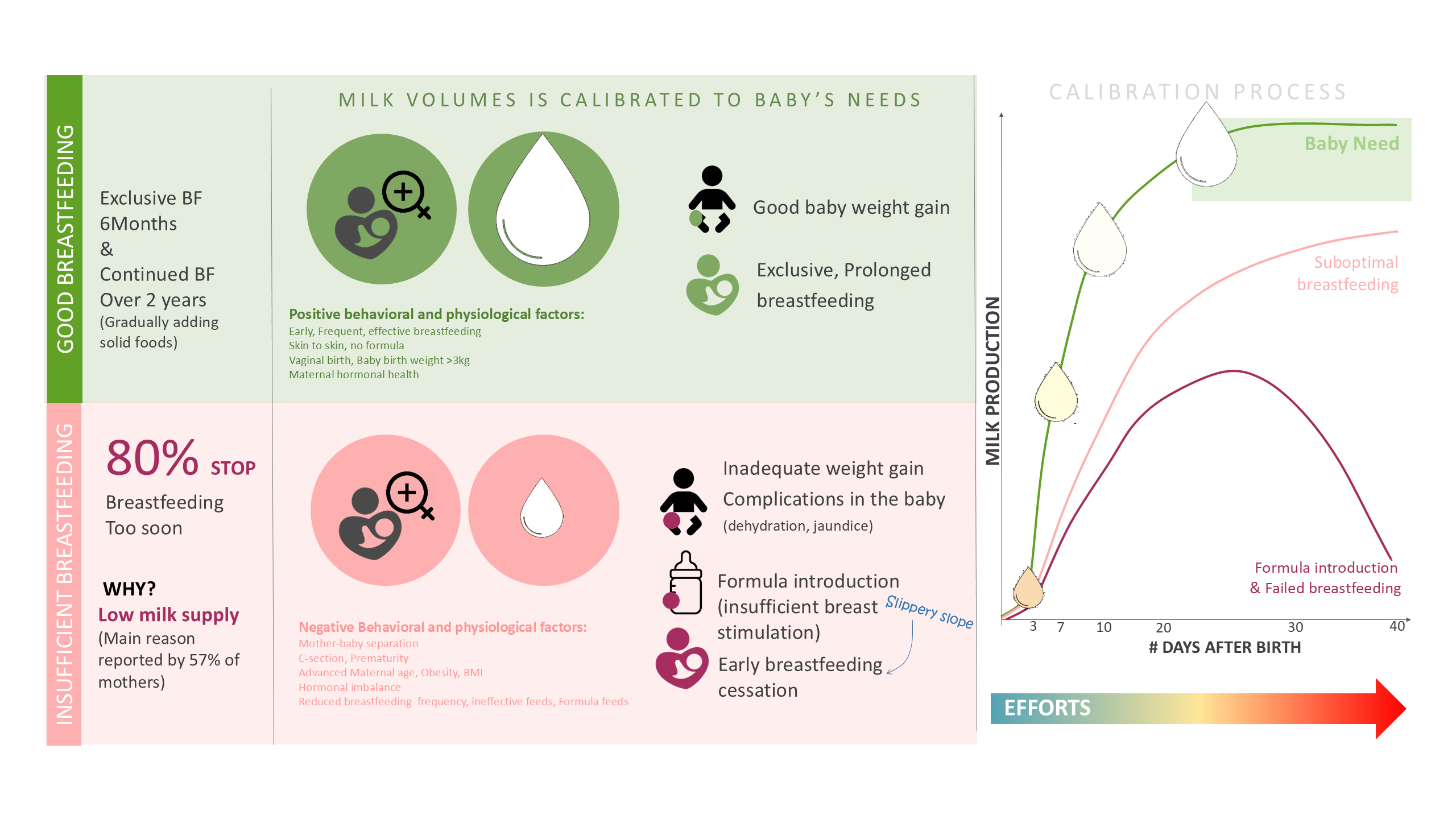
Breastfeeding establishment is the process by which milk supply and breastfeeding dynamics are developed in the first days to weeks postpartum.
This is also reflected in milk compositional changes transitioning from colostrum to mature milk during these first weeks. Early identification and management of delays can improve outcomes for successful exclusive breastfeeding.

By looking at the milk itself, the Mylee can help identify early trends within this dynamic process, in real time, from the first days after birth.
Levels of milk electrolytes, reflected in the milk electrochemical properties that the MyLee is measuring, may signal delays in milk production and potential breastfeeding challenges.

The MyLee system comprises a hand-held milk sensing device with a dual-sensor system configured to reliably measure milk sample conductivity in small (350ul) human milk sample, and a smartphone application implementing algorithms for data collection, processing, and visualization in a user-friendly manner.
US registered patent – US 12/150,772 B2PCT application – PCT/IL2024/050566
Breastfeeding establishment is the process by which milk supply and breastfeeding dynamics are developed in the first days to weeks postpartum.
This is also reflected in milk compositional changes transitioning from colostrum to mature milk during these first weeks. Early identification and management of delays can improve outcomes for successful exclusive breastfeeding.
By looking at the milk itself, the Mylee can help identify early trends within this dynamic process, in real time, from the first days after birth.
Levels of milk electrolytes, reflected in the milk electrochemical properties that the MyLee is measuring, may signal delays in milk production and potential breastfeeding challenges.
The MyLee system comprises a hand-held milk sensing device with a dual-sensor system configured to reliably measure milk sample conductivity in small (350ul) human milk sample, and a smartphone application implementing algorithms for data collection, processing, and visualization in a user-friendly manner.
US registered patent – US 12/150,772 B2PCT application – PCT/IL2024/050566



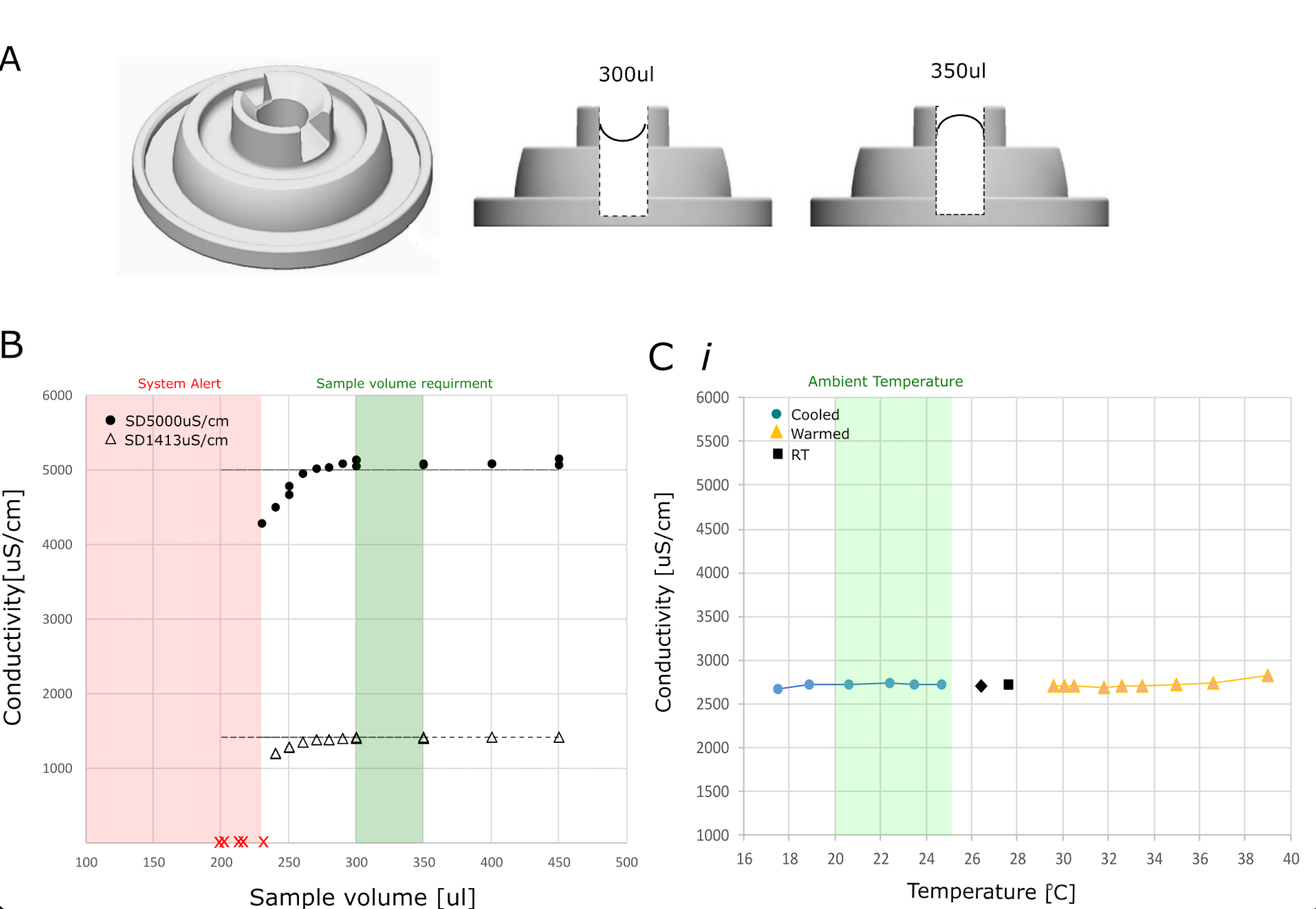
The system was subjected to rigorous device performance testing including linearity, precision, accuracy, and repeatability using standard solutions and breast milk specimens, and was compared to lab-grade analysers.
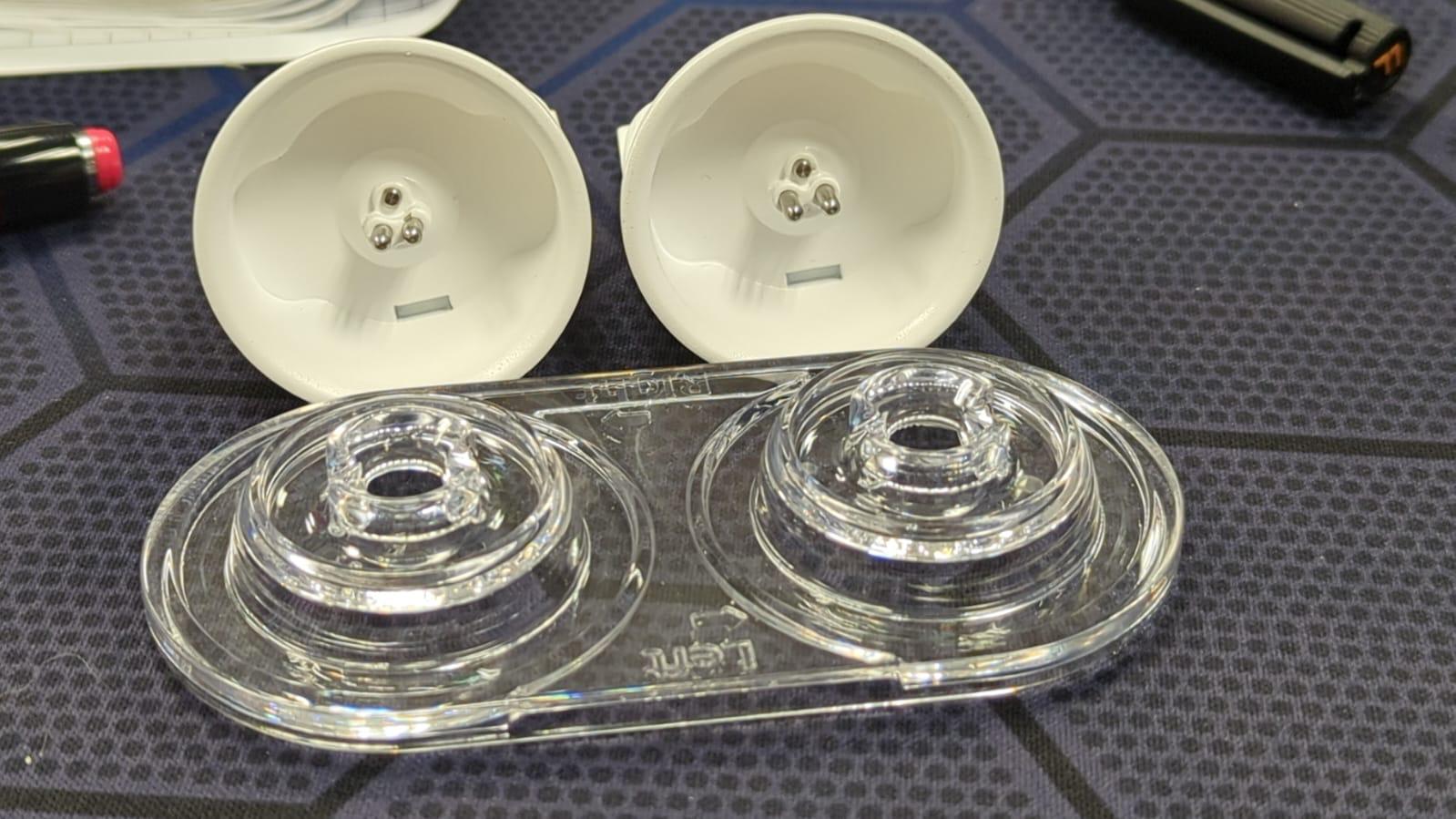
The MyLee was designed by engineers for simple and precise operation, to be used with miniature milk samples, by moms, at home. Our team has tested several rounds of prototypes before bringing the sleek, easily operated, robust and accurate tool to mother’s hands.

Laboratory analysis of a set of breast milk samples demonstrated a strong reverse correlation between system's MM% results and milk sodium measurements (Na+ ion levels), a well-studied biomarker for secretory activation states and lactation adequacy (unrelated to sodium in diet).
The system was subjected to rigorous device performance testing including linearity, precision, accuracy, and repeatability using standard solutions and breast milk specimens, and was compared to lab-grade analysers.
The MyLee was designed by engineers for simple and precise operation, to be used with miniature milk samples, by moms, at home. Our team has tested several rounds of prototypes before bringing the sleek, easily operated, robust and accurate tool to mother’s hands.
Laboratory analysis of a set of breast milk samples demonstrated a strong reverse correlation between system's MM% results and milk sodium measurements (Na+ ion levels), a well-studied biomarker for secretory activation states and lactation adequacy (unrelated to sodium in diet).



Milk Maturation Percent
A novel parameter for tracking secretory activation progress
MILK MATURATION %
Milk maturation % reflects breastfeeding establishment dynamics, not milk "quality" or sufficiency. While it does not diagnose feeding adequacy, it generally correlates with baby weight gain and breastfeeding exclusivity. The lower the maturation, the less advanced a mother is in her supply establishment progress. First goal? Reaching full maturation within the first 2-3 weeks.
HOW IS MILK MATURATION % COMPUTED
For each milk sample reading, MyLee computes a numeric milk maturation parameter from 0% (colostrum) to 100% (fully mature milk). it’s calculated using electrical conductance of milk samples, compared against a proprietary dataset of thousands of samples collected over the first 6 months postpartum.
COLOR INDICATION
The index is color-coded: green (above average) or orange (below average) relative to MyMilk benchmarks for the specific postpartum day, based on MyMilk’s reference dataset. The good news? Orange results also indicate that by being proactive there is an opportunity to significantly boost supply!
TEXT INSIGHTS
Milk maturation % compares breasts and tracks changes over time, providing insights on supply, breast imbalance or restricted milk flow, which could signal the need for improved milk removal. It does not diagnose medical conditions.
DAY FROM BIRTH PREDICTION
The system estimates the day postpartum the sample aligns with compared to MyMilk’s data. This helps identify if the milk is progressing, delayed, or advanced in maturation, and demonstrate the extent of a delay.
ENHANCED PERSONALIZED INSIGHTS
System further generates enhanced personalized insights, augmenting milk insights, based on additional maternal-baby system records, E.g. breastfeeding efficiency and confidence scores, breastfeeding frequency and duration, breast discomfort, diaper counts, baby weight gain, feedings, infant conditions, surveys and more.
REAL WORLD EVIDENCE
Data continuously accumulated on-the-spot with MyLee systems from moms and lactation consultants are aggregately analysed for improving system algorithms, and improve our understanding of the science of breastfeeding internally and together with academic partners.
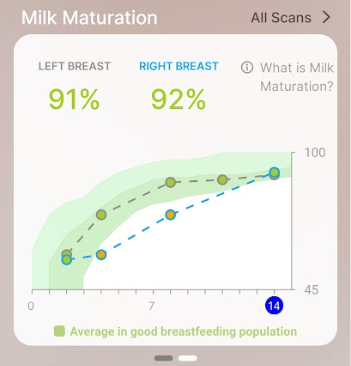
Follow each side seperately. Color coded relative to population set. Expected to evolve from low % to 100% during the first weeks after birth. Allows the identification of delay relative to expected, difference between sides, and response to change in routine.
Follow each side seperately. Color coded relative to population set. Expected to evolve from low % to 100% during the first weeks after birth. Allows the identification of delay relative to expected, difference between sides, and response to change in routine.

Our Scientific Research
We’re proud to lead the research in this important emerging scientific field, and to work with experts at leading institutions to further scientific understanding of breastfeeding and maternal and infant health.

The Crucial First days and weeks: Insights from Breastfeeding Medicine
In July 2025, the Academy of Breastfeeding Medicine (ABM) published a special issue of Breastfeeding Medicine dedicated to one of the most critical but often overlooked stages of lactation: the fir...
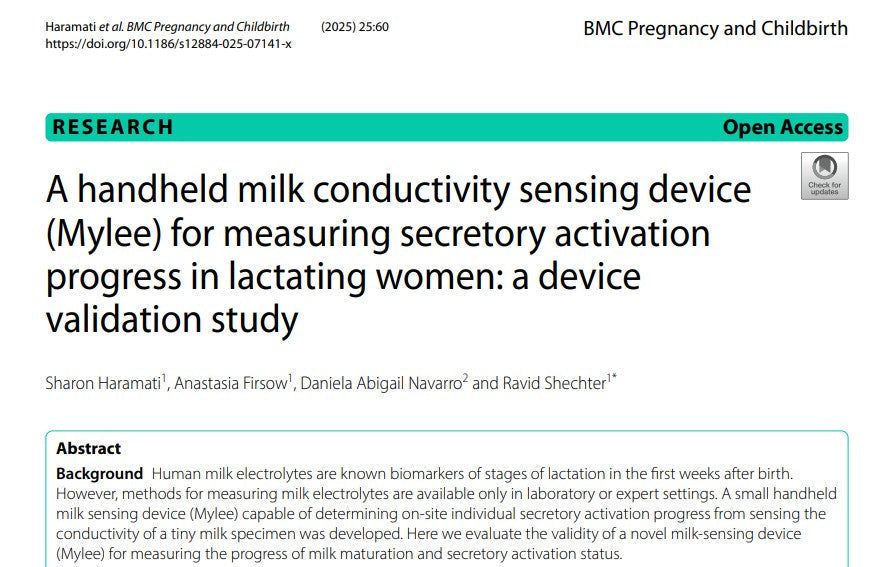
MyLee device Validation Published
Haramati S. BMC Pregnancy Childbirth (2025). Handheld milk conductivity sensing device (Mylee) for measuring secretory activation progress in lactating women: a device validation study. Device val...
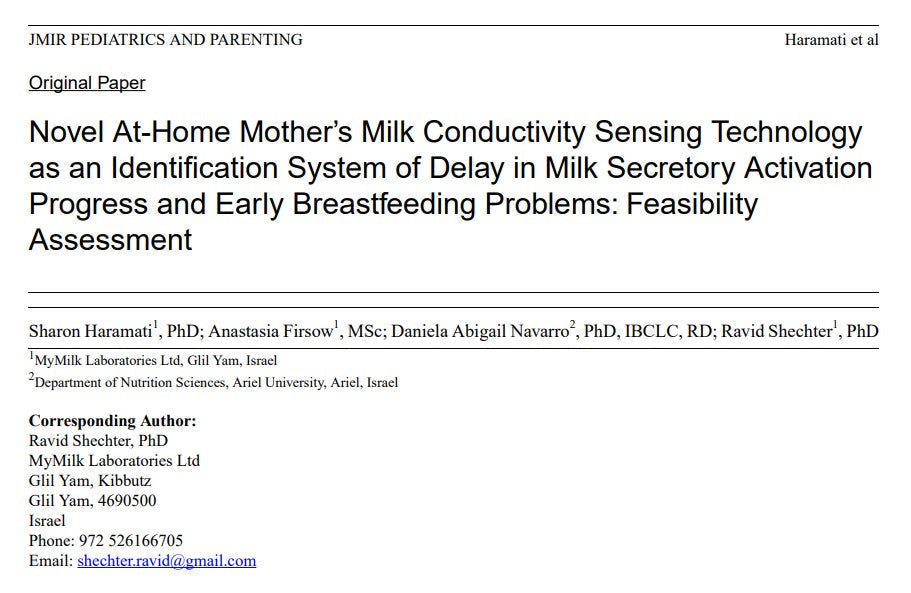
The Tech behind the Mylee published
Haramati S., JMIR Pediatrics and Parenting (2023). 'Novel At-Home Mother’s Milk Conductivity Sensing Technology as an Identification System of Delay in Milk Secretory Activation Progress and Early ...
UCSF
MyMilk had collaboration with the lab of Dr. Nadav Ahituv of UCSF, integrating the MyLee breast milk scanner system intended for early monitoring of breastmilk maturation dynamics, as part of a research by Dr. Yarden Golan Maor, studying the biological basis of low milk supply.
Dr. Abigail Navarro, Seed Lab
Ongoing research titled: Optimizing Breastfeeding: A Home-Based Monitoring of Milk Maturity as indication for breastfeeding establishment progress and Personalized Tracking of Breastfeeding Progress in At-Risk Populations
References
Haramati S, Novel At-Home Mother’s Milk Conductivity Sensing Technology as an Identification System of Delay in Milk Secretory Activation Progress and Early Breastfeeding Problems: Feasibility Assessment. JMIR Pediatr Parent 2023
Haramati, S, Firsow, A., Navarro, D.A.et al.A handheld milk conductivity sensing device (Mylee) for measuring secretory activation progress in lactating women: a device validation study.BMC Pregnancy Childbirth 25, 60 (2025).
Odom EC et al. Reasons for earlier than desired cessation of breastfeeding. Pediatrics. 2013 Mar;131(3)
Brownell, Does Delayed Onset Lactogenesis II Predict the Cessation of Any or Exclusive Breastfeeding? J Pediatr. 2012
Chapman DJ, Perez-Escamilla R. Does delayed perception of the onset of lactation shorten breastfeeding duration? J Hum Lact 1999.
Dewey KG. Risk factors for suboptimal infant breastfeeding behavior, delayed onset of lactation, and excess neonatal weight loss. Pediatrics 2003
Humenick, Breast-milk sodium as a predictor of breastfeeding patterns. Can J Nurs Res. 1998.
Galipeau R., et al. Infant and Maternal Factors Influencing Breastmilk Sodium Among Primiparous Mothers. Breastfeeding medicine, 2012, Volume 7, Number 4
Koo WW, Gupta JM. Breast milk sodium. Arch Dis Child.1982. 57(7): 500–502
Kulski JK et al. CHANGES IN HUMAN MILK COMPOSITION DURING THE INITIATION OF LACTATION. Australian Journal of Experimental Biology and Medical Science. Volume 59, Issue 1
Miller. Electrical conductivity and chloride content of women’s milk. Part 3. Relationship to adequacy of lactation,
Archives of Disease in Childhood , 1951, 26(128):325-9
Miller and Jackson, Electrical conductivity and chloride content of women’s milk. Part 4. Results and their relationship to milk yield and to duration of lactation, Archives of Disease in Childhood, 1951, 26(128):329-334
Morton J et al. The Clinical Usefulness of Breast Milk Sodium in the Assessment of Lactogenesis, Pediatrics, 1994
Neville et al. , Studies in human lactation: milk volume and nutrient composition during weaning and lactogenesis. The American Journal of Clinical Nutrition, 1991;54

